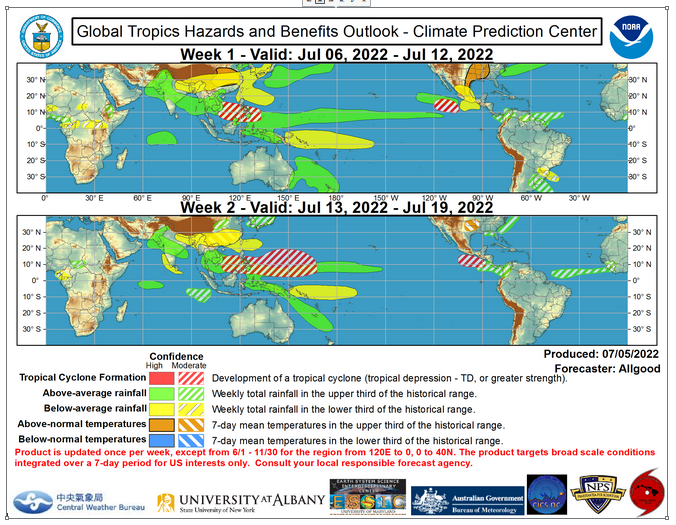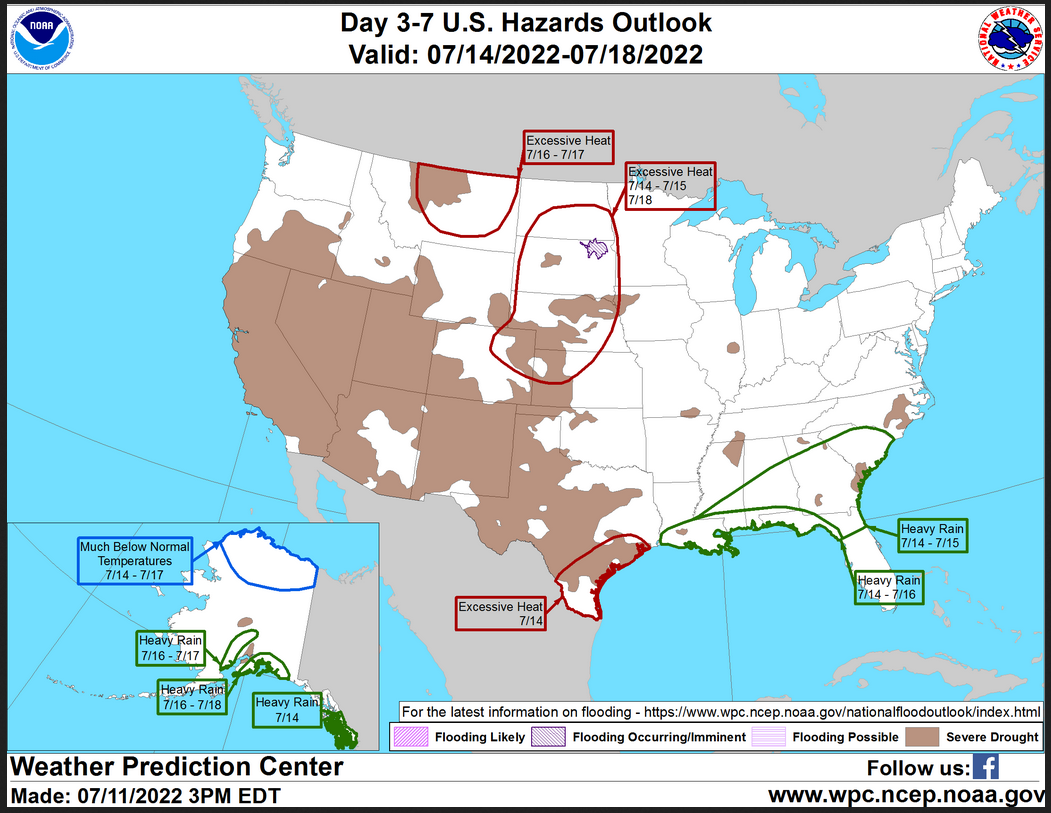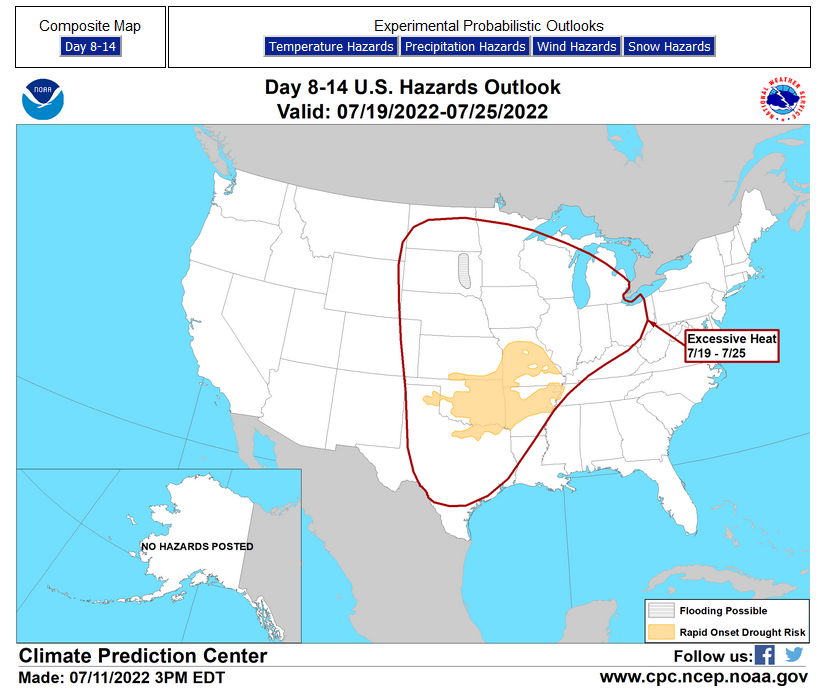Here is what we are paying attention to this evening and the next two days from this afternoon’s NWS Forecast.
...Dangerous heat to continue across portions of the southern Plains... ...Severe storms possible from the Midwest this evening to the Mid Atlantic and Northeast tomorrow... ...Heavy rains will be possible along portions of the northern Gulf Coast from Louisiana to the Florida Panhandle over the next several days...
Continuation of the NWS Short Range Forecast (It is updated twice a day and these updates can be found here.
Above-normal to record-breaking temperatures are forecast to continue through midweek across portions of the southern Plains. Heat Advisories and Excessive Heat Warnings remain in effect across a large portion of Texas, where heat indices are expected to soar well above 100 degrees once again tomorrow. Further to the north, a cold front will bring relief from the heat to the central Plains and mid Mississippi Valley. In addition to cooler temperatures, the front is expected to bring showers and storms as it drops south through the central Plains and mid Mississippi Valley and pushes east from the Great Lakes and Ohio Valley to the Northeast and Mid Atlantic over the next couple of days. Some of the these storms may become strong to severe, producing damaging winds. Through this evening the greatest threat for severe storms is expected to center from central Illinois to southern Lower Michigan. Then tomorrow, the greater threat will likely shift into the Mid Atlantic and Northeast. Meanwhile, moist easterly winds north of the front will likely support showers and thunderstorms from the Colorado Rockies and High Plains into the New Mexico. Some of these storms may produce heavy rainfall amounts, resulting in flash flooding, especially across vulnerable burn scar areas. Across the Southeast and along the Gulf Coast, showers and thunderstorms will continue to focus along a lingering frontal boundary. There is an increasing chance for heavy rains to develop along the central Gulf Coast near a slow-moving area of low pressure. The National Hurricane Center is monitoring this system for potential tropical cyclone development. While the evolution of this system is far from certain, heavy rains will be possible along portions of the northern Gulf Coast from Louisiana to the Florida Panhandle over the next several days. Following a day of well above-normal to record-breaking heat along the Northwest Coast and California, a gradual cool down is expected along the coast as the axis of well-above normal temperatures shifts east through the Intermountain West and into the northern Rockies and High Plains on Tuesday and Wednesday.
21 to 28 Day Forecast/Outlook (On Thursday it is a 22 day forecast and when the Week 3 – 4 Forecast Updates on Friday it becomes a 28 day forecast)
Links to “Outlook” maps and discussions for three time periods. Days 6 – 10, Days 8 – 14, and Weeks 3 and 4. An outlook differs from a forecast based on how NOAA uses these terms in that an “outlook” presents information from deviation from normal and the likelihood of these deviations.
HAZARDS OUTLOOKS
Click here for the latest complete Day 3 -7 Hazards forecast which updates only on weekdays. Once a week probably Monday or Tuesday I will update the images. I provided the link for reads to get daily updates on weekdays. Use your own judgment to decide if you need to update these images.
Worldwide Tropical Forecast
(This graphic updates on Tuesdays) If it has not been updated, you can get the update by clicking here https://www.cpc.ncep.noaa.gov/products/precip/CWlink/ghazards/images/gth_small.png
–

Detailed Maps and Reports for the Western Atlantic and the Pacific Oceans
Below are three maps that summarize the situation for the Atlantic, Eastern and Central Pacific. Additional information can be accessed by clicking HERE
First the Eastern Pacific
Click to view the forecast map and have access to additional information https://www.nhc.noaa.gov/gtwo.php?basin=atlc&fdays=5
Then Eastern Pacific
Click to view the forecast map and have access to additional information https://www.nhc.noaa.gov/gtwo.php?basin=epac&fdays=5
Then Central Pacific
Click to view the forecast map and have access to additional information https://www.nhc.noaa.gov/gtwo.php?basin=cpac&fdays=5
And the Western Pacific
Click to view the forecast map and have access to additional information https://www.metoc.navy.mil/jtwc/jtwc.html



